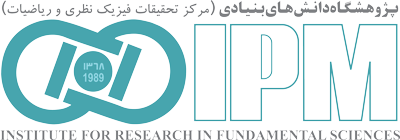“School of Physics”
Back to Papers HomeBack to Papers of School of Physics
| Paper IPM / P / 17068 | ||||||||||||||||||||||||||||||
|
||||||||||||||||||||||||||||||
| Abstract: | ||||||||||||||||||||||||||||||
|
Local H0 determinations currently fall in a window between H0∼70 km/s/Mpc (TRGB) and H0∼76 km/s/Mpc (Tully-Fisher). In contrast, BAO data calibrated in an early ΛCDM universe are largely consistent with Planck-ΛCDM, H0∼67.5 km/s/Mpc. Employing a generic two parameter family of evolving equations of state (EoS) for dark energy (DE) wDE(z) and mock BAO data, we demonstrate that if i) wDE(z=0)<−1 and ii) integrated DE density less than ΛCDM, then H0 increases. EoS that violate these conditions at best lead to modest H0 increases within 1σ. Tellingly, Quintessence and K-essence satisfy neither condition, whereas coupled Quintessence can only satisfy ii). Beyond these seminal DE Effective Field Theories (EFTs), we turn to explicit examples. Working model agnostically in an expansion in powers of redshift z, we show that Brans-Dicke/f(R) and Kinetic Gravity Braiding models within the Horndeski class can lead to marginal and modest increases in H0, respectively. We confirm that as far as increasing H0 is concerned, no DE EFT model can outperform the phenomenological two parameter
family of the DE models. Evidently, the late universe may no longer be large enough to accommodate H0, BAO and DE described by EFT.
Download TeX format |
||||||||||||||||||||||||||||||
| back to top | ||||||||||||||||||||||||||||||



















